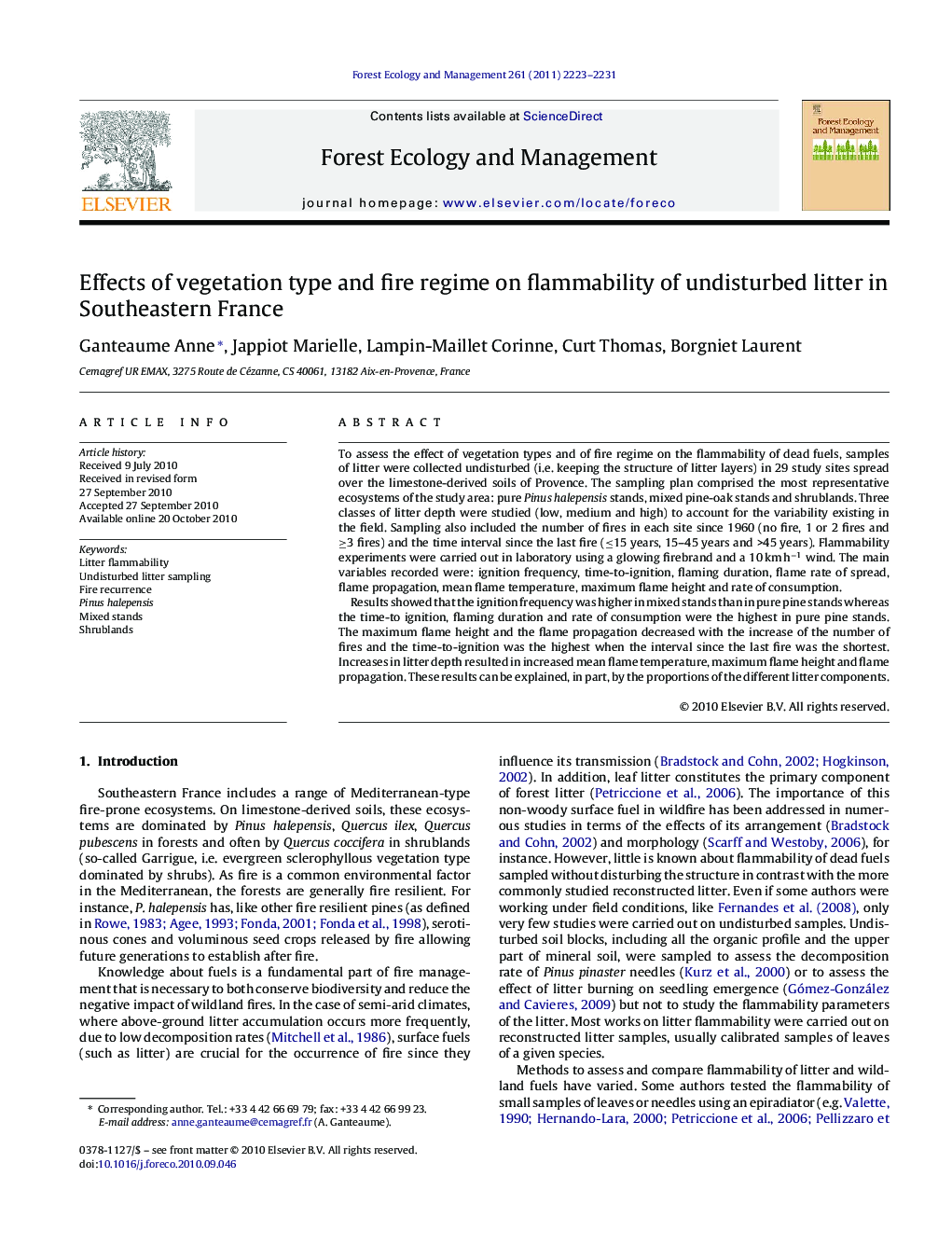| کد مقاله | کد نشریه | سال انتشار | مقاله انگلیسی | نسخه تمام متن |
|---|---|---|---|---|
| 87978 | 159274 | 2011 | 9 صفحه PDF | دانلود رایگان |

To assess the effect of vegetation types and of fire regime on the flammability of dead fuels, samples of litter were collected undisturbed (i.e. keeping the structure of litter layers) in 29 study sites spread over the limestone-derived soils of Provence. The sampling plan comprised the most representative ecosystems of the study area: pure Pinus halepensis stands, mixed pine-oak stands and shrublands. Three classes of litter depth were studied (low, medium and high) to account for the variability existing in the field. Sampling also included the number of fires in each site since 1960 (no fire, 1 or 2 fires and ≥3 fires) and the time interval since the last fire (≤15 years, 15–45 years and >45 years). Flammability experiments were carried out in laboratory using a glowing firebrand and a 10 km h−1 wind. The main variables recorded were: ignition frequency, time-to-ignition, flaming duration, flame rate of spread, flame propagation, mean flame temperature, maximum flame height and rate of consumption.Results showed that the ignition frequency was higher in mixed stands than in pure pine stands whereas the time-to ignition, flaming duration and rate of consumption were the highest in pure pine stands. The maximum flame height and the flame propagation decreased with the increase of the number of fires and the time-to-ignition was the highest when the interval since the last fire was the shortest. Increases in litter depth resulted in increased mean flame temperature, maximum flame height and flame propagation. These results can be explained, in part, by the proportions of the different litter components.
Research highlightsTo assess the effect of vegetation type and fire regime, flammability experiments were carried out on undisturbed (e.g. without disturbing the litter structure) litter sampled in Southeastern France. The results, mainly explained by the proportions of the different litter components, showed that: ▶ Ignitability was the highest in mixed pine-oak stands. ▶ Sustainability and consumability were the highest in pure pine stands. ▶ Flame height and spread decreased with the increasing number of fires. ▶ Time-to-ignition was the longest with short interval since the last fire. ▶ Combustibility was the highest with high litter depth.
Journal: Forest Ecology and Management - Volume 261, Issue 12, 15 June 2011, Pages 2223–2231